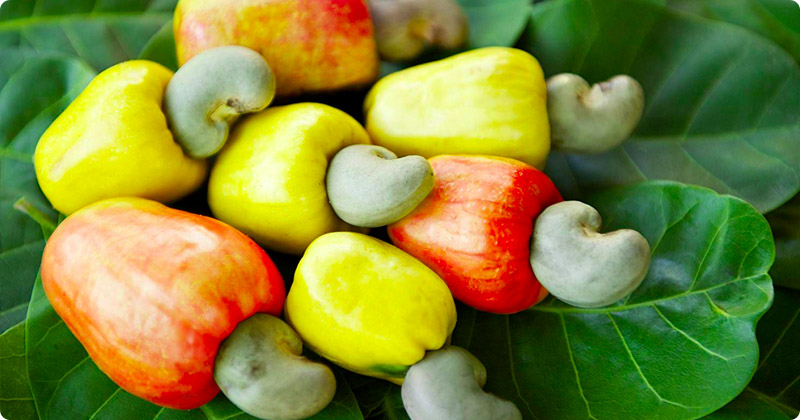- +91 99807 52976
- +91 08259-204075
- [email protected]
Cashew History

The Cashew (Anacardium occidentale) is a tree in the flowering plant family Anacardiaceous. The plant is native to north eastern Brazil, where it is called by its Portuguese name Caju (the fruit) or Cajueiro (the tree). It is now widely grown in tropical climates for its cashew “nuts” (see below) and cashew apples.
It is a small evergreen tree growing to 10-12 m tall, with a short, often irregularly-shaped trunk. The leaves are spirally arranged, leathery textured, elliptic to ovate, 4-22 cm long, and 2-15 cm broad, with a smooth margin. The flowers are produced in a panicle or corymb up to 26 cm long, each flower small, pale green at first then turning reddish, with five slender, acute petals 7-15 mm long.
What appears on the tree to be the fruit of the cashew tree is an oval to pear-shaped accessory fruit or false fruit that develops from the receptacle of the cashew flower. The cashew apple, called or better known in Central America as “marañón”, ripens into a yellow and/or red structure about 5–11 cm long. The true fruit of the cashew tree is a kidney or boxing-glove-shaped drupe that grows at the end of the pseudofruit. The drupe develops first on the tree, and then the peduncle expands into the pseudofruit.
Within the true fruit is a single seed, the cashew nut. Although a nut in the culinary sense, in the botanical sense the fruit of the cashew is a seed. However, the true fruit is classified as a nut by some botanists. The seed is surrounded by a double shell containing a caustic phenolic resin, urushiol, a potent skin irritant toxin (also found in the related poison ivy). Some people are allergic to cashews, but cashews are less frequent allergens than some other nuts.
Quick Links
Contact Us
- +91 99807 52976
- +91 08259-204075
- [email protected]
- Shankarnarayana Cashews Krodabailoor- 576227, Kundapura Taluk, Udupi District, Karnataka State, India
